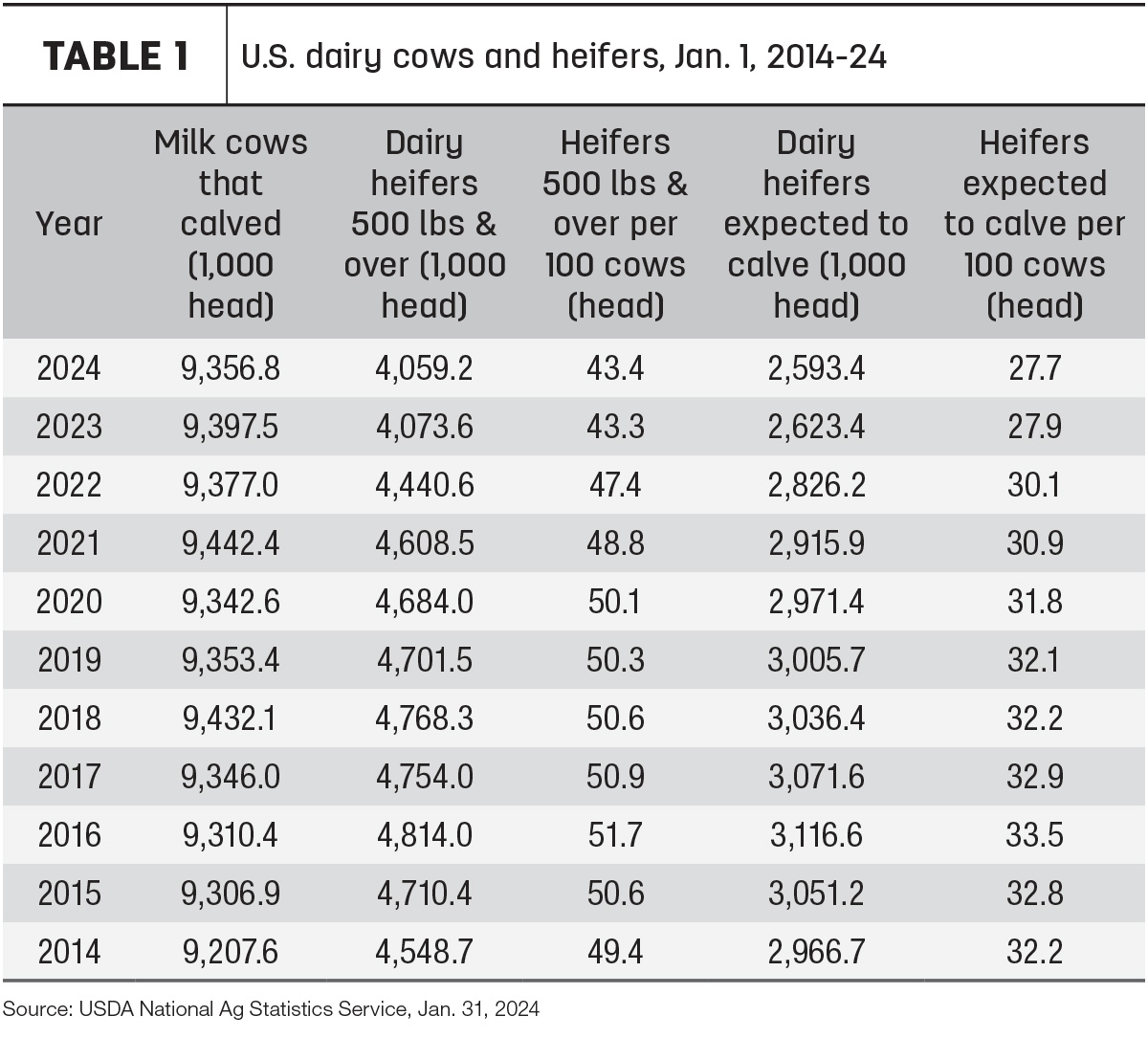The USDA’s semiannual estimate of cattle inventories indicates the number of dairy cows to start 2024 are the lowest in four years. With lower cow numbers and increased crossbreeding to beef sires, the number of dairy replacement heifers to start the year is the lowest in nearly two decades.
As of Jan. 1, U.S. dairy herds contained about 9.357 million dairy cows that calved in 2023, down about 40,700 from a year earlier (Table 1). It’s the smallest number of milk cows to start a year since 2020.

Just 10 states had more cows to start 2024 compared to a year earlier, led by South Dakota, up 21,000 head. Others with small increases were Florida, Michigan, Ohio, Arizona, Indiana, Washington, Idaho, Nevada and Kansas. In contrast, declines in New Mexico (-31,000) and Texas (-15,000) led the 26 states with fewer cows than a year earlier.
The 10 states with the highest cow numbers (thousands of cows) to start 2024 are:
- California – 1,715
- Wisconsin – 1,270
- Idaho – 663
- Texas – 635
- New York – 630
- Pennsylvania – 465
- Minnesota – 450
- Michigan – 439
- Washington – 257
- Ohio – 255
Looking at potential replacements, there were about 4.06 million dairy heifers weighing 500 pounds or more, down 14,400 from a year earlier and the lowest number to start a year since 2004. That averages out to be about 43.4 heifers per 100 cows, the smallest ratio since 2000.
Of those dairy replacement heifers, 2.593 million head are expected to calve in 2024, down about 30,000 from 2023. As of Jan. 1, there were 27.7 replacements expected to calve for every 100 cows currently in the herd, likely a new record low.
The states with the largest number of replacement heifers (1,000 head greater than 500 pounds) to start 2024 are:
- California – 690
- Wisconsin – 530
- Idaho – 350
- New York – 325
- Texas – 240
- Pennsylvania – 180
- Kansas – 175
- Minnesota – 165
- Michigan – 126
- Arizona, Colorado, Iowa, Washington – each 125
The inventories are based on data compiled by the USDA from about 36,300 dairy and beef operations during the first half of January 2024.
Tightening cow and heifer numbers pushed average prices for U.S. replacement dairy cows to a nine-year high in January, according to latest USDA quarterly estimates. Read: Replacement cow prices rise to 9-year high
Detailed statistical analysis of state and national dairy herds and milk production will be featured in the April 1 issue of Progressive Dairy.






